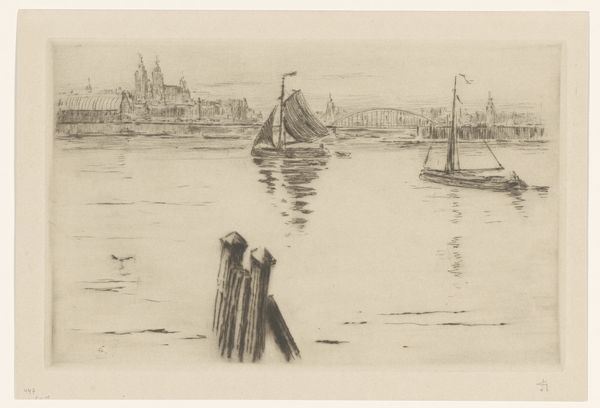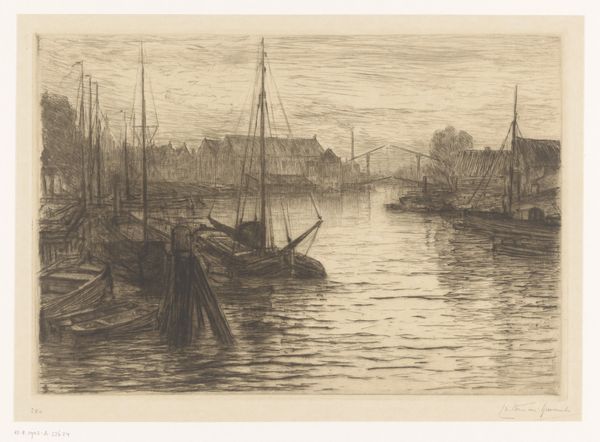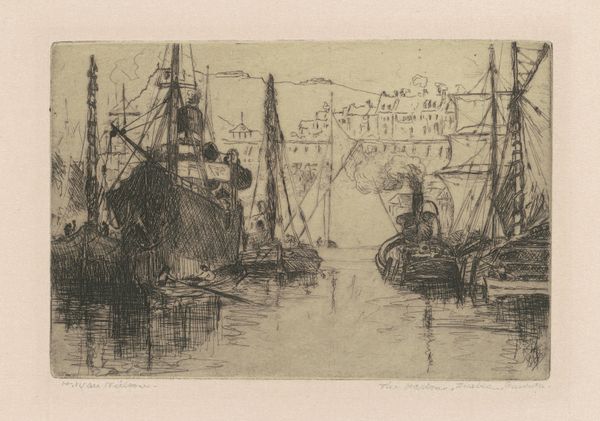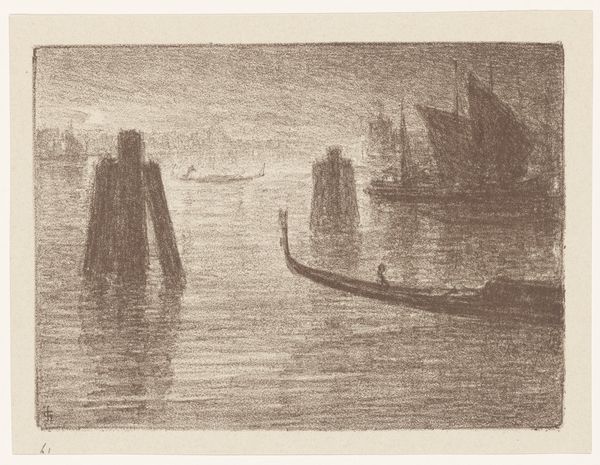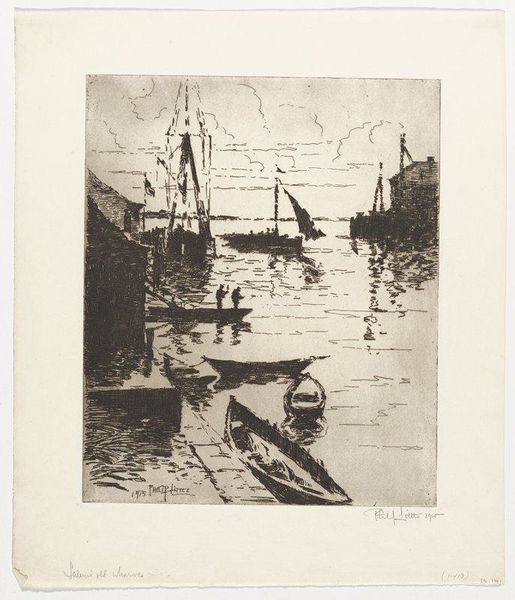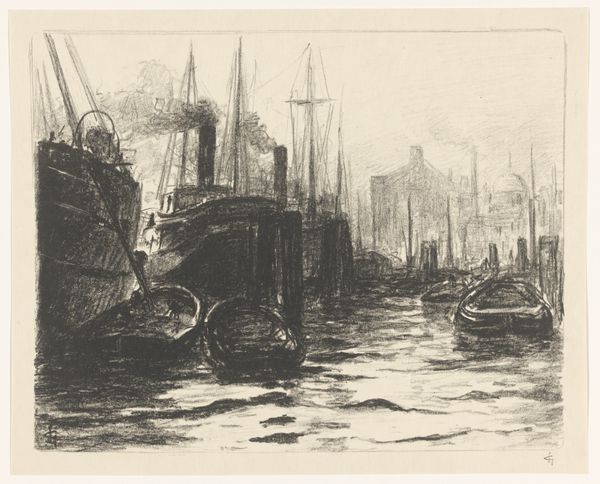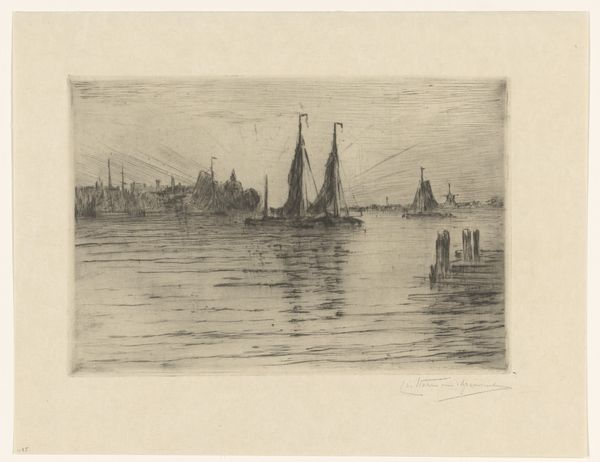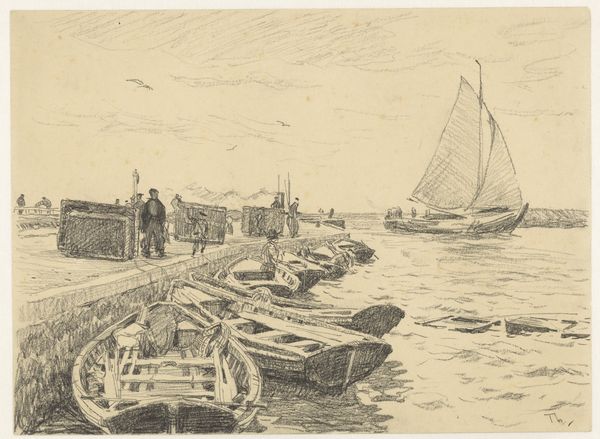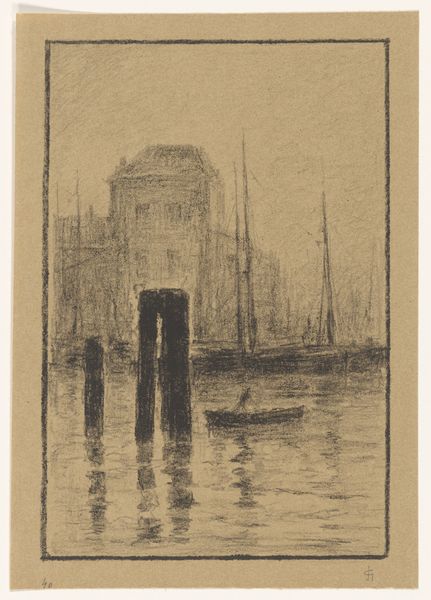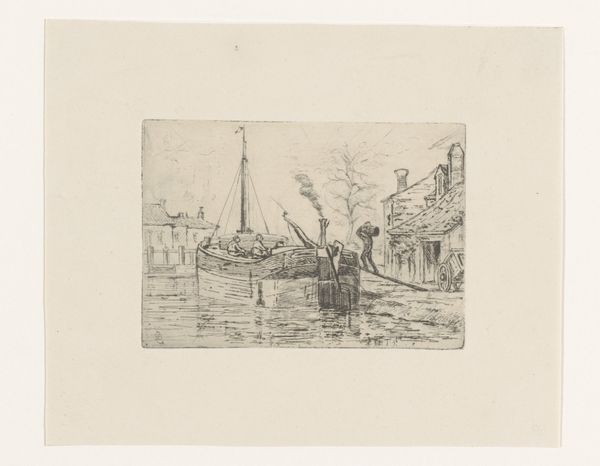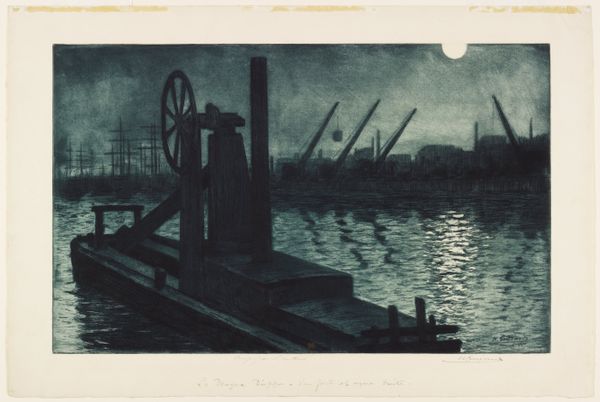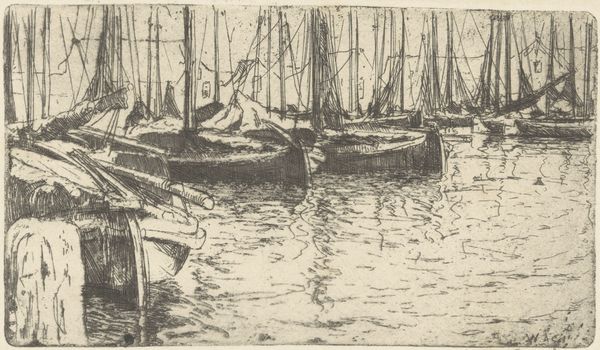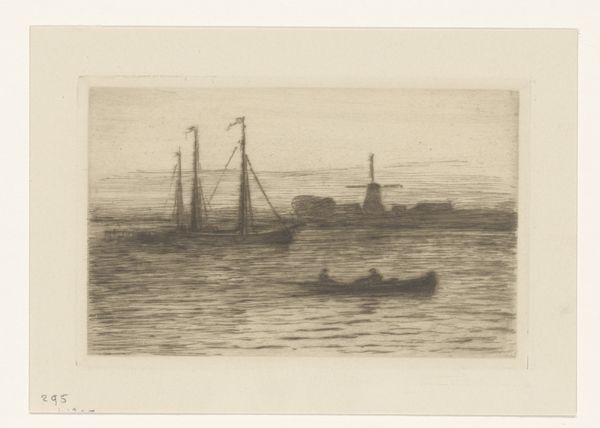
Harbor in Holland - Flushing (La balise - En Holland, Flessingue) c. 1894
0:00
0:00
Dimensions: plate: 17.8 x 22.3 cm (7 x 8 3/4 in.) sheet: 26.2 x 32.7 cm (10 5/16 x 12 7/8 in.)
Copyright: National Gallery of Art: CC0 1.0
Editor: This is Paul Signac's "Harbor in Holland - Flushing," an etching from around 1894. It's delicate, almost dreamlike in its portrayal of the harbor. What strikes me most is the use of line; it's so intricate. What do you see in this piece, particularly given your expertise? Curator: I see a direct connection to the labor of artmaking. Signac, primarily known as a painter, chooses etching, a process demanding physical engagement. The matrix itself - likely zinc or copper - had to be prepared, bitten with acid, inked, and then printed. This isn't just about depicting a harbor; it's about a relationship to production, connecting him to printmakers and craftspeople. Editor: That's interesting. I was mainly focused on the image itself and its aesthetic qualities. Curator: But the image is a product of the process. Consider the industrialization of the late 19th century; the means of producing *things* was radically transforming. Signac, like many artists, was grappling with this. How does an artist find meaning, find authenticity, when faced with mass production? Etching, a relatively 'slower' method compared to new photographic technologies, becomes a deliberate choice, almost a statement. Editor: So, you're saying the *choice* of etching itself becomes part of the artwork's meaning, not just what it depicts? Curator: Exactly. Look at the geometric structure in the water – the marker or pier. It echoes the linear quality of the etching itself, almost as if the artist is deliberately drawing our attention to the construction, the making of both the object in the harbor and the artwork itself. We have to think about what it meant to *make* something, to produce images, in Signac’s time. Editor: That shifts my understanding considerably. I was overlooking the significance of the process. I was taking for granted that it's an etching, not questioning *why* it’s an etching. Curator: Art history, seen through a materialist lens, forces us to confront those "whys". Editor: Thanks, I will carry on reflecting!
Comments
No comments
Be the first to comment and join the conversation on the ultimate creative platform.
